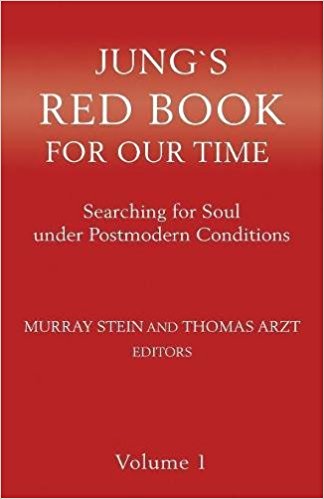
Edited by
Murray Stein & Thomas Arzt
Reviewed by Henry Reed
Could God appear in the form of a book?
Stirring up everything, all but destroying old viewpoints, scary as heck, exciting, creative... as Susan Rowland, one of the contributing essayists in this collection of responses to Carl Jung's The Red Book, noted, Dr. Jung's private creation and possession, not intended for publication, is "... Dionysian. It enacts the god in its raw tearing apart of disciplinary norms and artistic convention."
When The Red Book book came out in 2009, I was gifted a copy. I found the artwork the most captivating. It was also the easiest to appreciate at first glance, without having to make a study. Not true of the rest of a very large publication. What impacted me the most was browsing in a section of Jung's journalling in which he is dialoguing with a figure/personage. The tone and quality was very much like my own and student work I had read from my classes. When it came to dialoguing with the unconscious, Jung was a beginner himself! Just like us! He just took it farther and did more with it. The great Carl Jung and the rest of us share the same psyche. It's what we do with it that makes the difference. That's what I got out of it, and never really got into studying or even reading much of the The Red Book, except to look at the pictures and think about the time I could spend making art. This new publication, Jung's Red Book for Our Time, has re-energized me about Jung's masterpiece, yet also relieved me of any resulting need to go back and restudy it, better to spend my time working on my own project.
To describe Jung's Red Book for Our Time as an anthology of essays about Jung's creation would be to downplay the reality seething in these eighteen confessions. I call them that because each one is very personal, and charged. These folks, even though seasoned by years of professional Jungian experience, write as if compelled to respond. It serves them well. On the other hand, as a reader, I appreciate very much the groundedness they bring by way of their descriptions and explanations concerning the factualities surrounding Jung's creation. I learned a lot about the Red Book that I didn't know--stuff I could have learned by reading more in it, because The Red Book's editor, Sonu Shamdasani, provided this information with it--that affects how I see it. I can better appreciate why Murray Stein and Thomas Arzt went to the trouble to create this collection of meditations.
Slow me... Today's crises, Earth challenged, people flummoxed, what is going to happen? Decades ago, reading about "God is dead," Jung's appraisal that a new myth was needed and sensed it's germination--should we live that long. Analytical Psychology always has had a spiritual bent to it, that the inner work of consciousness creation was a necessary and holy work. Jung mentioned the specter of war many times. And today we hear a lot about "empathy." The postmodern (truth does not exist, only stories about truth) perspective has left many on the margins. Jungians know how margins tend to find their way onto the page. So we may be having a "teachable moment," from the Jungian perspective, one with spiritual implications, if not a downright straightforward invitation to join the march of consciousness.
I'm looking forward to the second volume, where we'll get to experience the confessions of yet another couple dozen professional Jungians who've interacted with Jung's The Red Book. What else will we learn? Has God returned in a book?
To explore Jung's Red Book for Our Time at Amazon.com, click here!